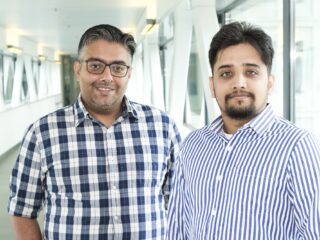The CAMK2 syndrome is very rare. Globally, there are about 250 known patients, with fewer than 20 in the Netherlands. However, more people likely are affected because the syndrome was only discovered in 2017, says pediatrician Daniëlle Veenma. She specializes in hereditary and congenital diseases and leads the specialized treatment team for CAMK2 patients in the ENCORE expert center at Erasmus MC Sophia.
Together with scientist Geeske van Woerden from the Departments of Clinical Genetics and Neuroscience at Erasmus MC, Veenma is searching for a treatment for the CAMK2 syndrome. There is eager anticipation for therapy because currently, a cure is not possible. Patients with the CAMK2 syndrome have intellectual disabilities and behavioral problems that lead to, sometimes increasing, severe limitations in daily life. Often, patients also have motor problems.
ASO therapy
Van Woerden and Veenma are pinning their hopes on a form of gene therapy called antisense oligonucleotides (ASOs). With ASOs, the cause of the CAMK2 syndrome, a wrongly produced protein, can be eliminated. The Dutch Hersenstichting recently granted the team 600,000 euros to assess the potential of ASO therapy for the CAMK2 syndrome.
‘We are creating a roadmap that outlines what needs to be done and known before we can start a clinical study with the patients,’ says Van Woerden. According to the duo, they must combine their strengths. As a pediatrician, Veenma knows a lot about the clinical picture of the patients. She will map the disease more accurately and, within the Kinderhersenlab, develop tests to measure whether ASO therapy improves symptoms. Van Woerden has been working on the CAMK2 protein for years and focuses on the biomedical aspect of the research, such as developing and testing ASO therapy in the lab. She uses brain cells made from stem cells and mouse models for this.
Interaction
The interaction between the clinic and the laboratory is the strength of the research. Van Woerden gives an example: ‘Daniëlle heard from parents that many children have gastrointestinal problems. I had no idea about that because, as a neuroscientist, I work with brain cells. I then take that information into account when testing ASO therapy on cells and mice.’
Van Woerden and Veenma aim to test ASO therapy on a patient with CAMK2 syndrome four years after the start of the project. ‘A high ambition, but we believe it is achievable. Despite the challenges, we have good hope that our approach can succeed.’



